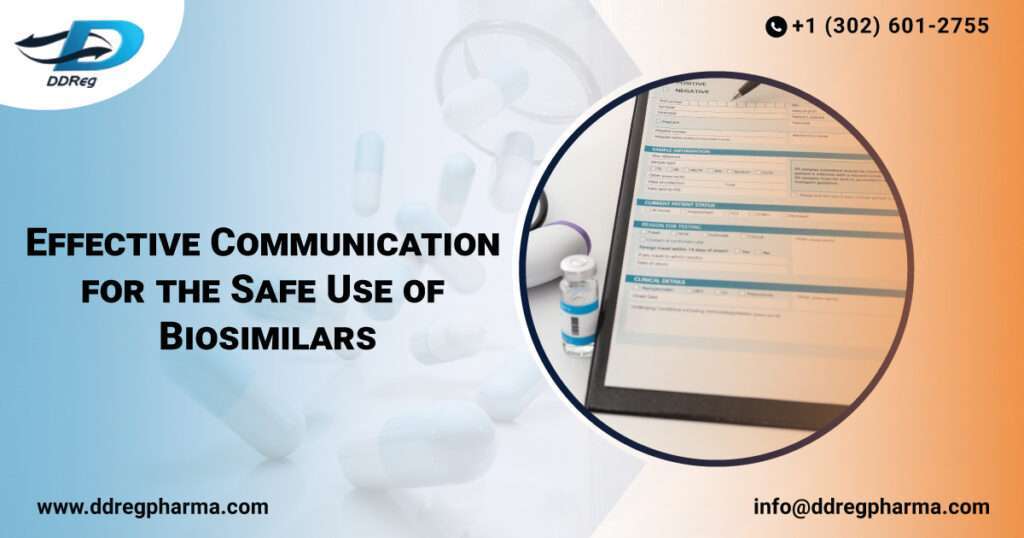Biosimilars and interchangeability with biologics has been a topic of discussion for regulatory authorities worldwide, including their definitions and varying requirements per regions. However, a key requirement or standard for interchangeability requires applicants to provide sufficient information to demonstrate bio similarity. This reflects in the biosimilars labelling requirements where prescription drug and biological product labels should provide adequate information in order for healthcare providers to safely use the drug and for its intended purpose. Product labels that communicate information on safety and effectiveness of the biologic or prescription product facilitates the prescribing decisions which further supports the safe and effective use of such products and reducing the likelihood of medication errors. Therefore, it is imperative to have frameworks and guidelines that guide applicants for appropriate product labelling.
US FDA: Guidance on Labeling for Biosimilar and Interchangeable Biosimilar Products
The US Food and Drug Administration (FDA) has recently unveiled a draft guidance on biosimilar labelling, building on the previous guidance that was issued in 2018. The proposed changes focus on eliminating details about interchangeability from biosimilar labels, citing potential confusion for healthcare providers and patients.
The draft guidance operates within the framework of Section 351(k) of the Public Health Service (PHS) Act, which outlines an expedited licensing process for biological products deemed biosimilar or interchangeable with an FDA-licensed reference product. Bio similarity, as defined in Section 351(i) of the PHS Act, requires no clinically meaningful differences in safety, purity, and potency compared to the reference product. Interchangeability goes a step further, necessitating the ability to produce the same clinical results without increased risks when alternating or switching between the biosimilar and reference product.
Precision in Labelling: Labelling should precisely correspond to the sought conditions of use for the biosimilar product, aligning with the language approved for the reference product.
Licensing for Specific Conditions: Information pertaining to unlicensed conditions in the reference product labelling may be excluded in the biosimilar product labelling if the biosimilar is licensed for fewer conditions. However, in certain situations, information for unlicensed conditions may be necessary for safe use.
Content for Safety Assurance: Information related to safety should be included in the biosimilar product labelling, even for unlicensed conditions. This information includes the following:
- Boxed Warning
- Contraindications
- Warnings And Precautions
- Adverse Reactions
- Drug Interactions
- Use In Specific Populations
Data Inclusion in Labelling: When including data from clinical trials in the biosimilar product labelling, reflect the total number of patients from the reference product trials, including anonymization of unlicensed indications.
Highlights of Prescribing Information: The Highlights section should include the initial U.S. approval and a biosimilarity statement clarifying that the biosimilar product is approved based on demonstrated similarity to the reference product.
Indications and Usage Section: Information in this section should be specific to licensed indications and consistent with the reference product. Limitations of Use relevant to the biosimilar product’s indications should be included.
Use in Specific Populations – Pediatric Use: Pediatric use information should be included in the Pediatric Use subsection and other relevant sections. Biosimilar product applicants are not required to independently re-establish safety and effectiveness for pediatric use.
Clinical Pharmacology – Immunogenicity: The labeling should incorporate relevant immunogenicity data from the reference product, following FDA recommendations. If the reference product labelling is inconsistent with FDA guidance, the biosimilar product labelling should incorporate relevant data with appropriate modifications.
Conclusion
The FDA’s preliminary guidance on biosimilar labelling demonstrates a comprehensive strategy to guarantee clarity, consistency, and safety in conveying information to healthcare providers and patients. As the regulatory environment undergoes ongoing developments, participants in the pharmaceutical industry are urged to offer input on the suggested modifications, actively contributing to the enhancement and ultimate approval of the guidance.
As part of its regulatory services and labeling portfolio, DDReg provides end-to-end support for product labeling with respect to biologics and biosimilars. Want to know more about biosimilars? Read “Evaluating the need for comparative clinical efficacy studies in biosimilar development”.

